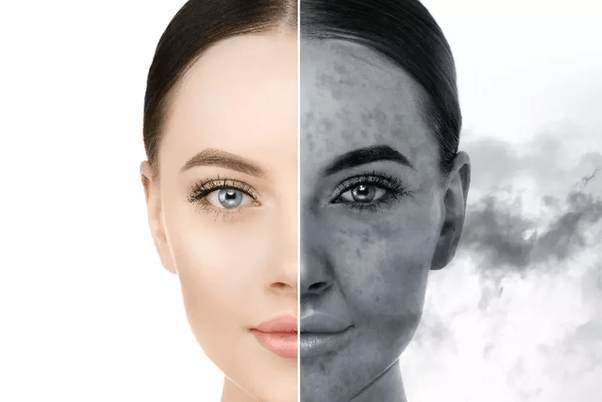A Scientific Paper from AlumierMD
We have known for many years about the negative impact of pollution on our health and the environment. However, only more recently have we begun learning about pollutions impact on our skin.
What exactly is pollution?
Air is essential to life because it supplied us with oxygen. Air pollution is the contamination of air with noxious gases and particles in concentrations that endanger the health of humans animals or plants (NASA).
Pollution is present in different forms. Particulate pollution is made up of tiny pieces of solids of liquids that are in the air. Some particles such as dust, dirt, soot and smoke are large enough or dar enough to be seen with the naked eye in the air or on your washcloth after cleaning your face. Others are too small to see in the air and can only be detected with an electron microscope. Some particulates occur naturally such as those from volcanoes, forest fires and dust storms. The burning of fossil fuels in motor vehicles, power plants and factories are also a significant source of particulates.
There is also gas pollution such as nitrogen oxides, sulfur dioxide, carbon monoxide, ozone and VOCs (volatile organic compounds). The burning of fossil fuels for electricity, heat and transportation causes a significant amount of gas pollution. All forms of pollution can collect on your skin and lead to negative sequelae.
 How does pollution affect the skin?
How does pollution affect the skin?The skin acts as our first line of defence to the many environmental stressors it encounters daily. Along with ultraviolet light and harsh climates, pollution is another one of these stressors.
When pollution comes into contact with our skin, it unfortunately does not just sit on the surface. Some pollution particles are so tiny that they can easily penetrate through pores. This allows them to infiltrate deeper layers of the epidermis, causing not only inflammation and dehydration but also a disruption of the skins barrier and breakdown of collagen, which accelerates wrinkling and ageing.Particulate matter (PM) induces oxidative stress via production of reactive oxygen species (ROS – you may remember this from our previous article on free radicals and antioxidants) and the secretion of pro-inflammatory cytokines. In addition the increased production of ROS such as superoxide and hydroxyl radical by PM exposure increases matrix metalloproteinases (MMPs) resulting in the degradation of collagen. Overall, increases levels of PM are associated with acne, skin sensitivity and visible signs of ageing including hyperpigmentation.
 A landmark study in the Journal of Investigative Dermatology in 2016 compared women living in urban and rural environments over 24 years and found that those exposed to increased pollution had more dark spots (lentigines) and wrinkling.
A landmark study in the Journal of Investigative Dermatology in 2016 compared women living in urban and rural environments over 24 years and found that those exposed to increased pollution had more dark spots (lentigines) and wrinkling.According to a new study in 2017, the role of inflammation in the development and progression of acne is increasingly being recognised. This study revealed that while the prevalence of acne is similar between Asian and Caucasian women, Asian women experience inflammatory acne more frequently and report flare-ups during high pollution periods.
 How can you protect your skin from pollution?
How can you protect your skin from pollution?
- Proper cleansing – All the experts agree that proper cleansing of your face and neck every night to remove dirt and environmental toxins from the skins surface is the most important thing you can do to protect your skin from pollution.
- Moisturise – Use your favourite moisturiser to replenish the skins lost moisture caused by pollution and to protect the skins lipid barrier from pollution.
- Use antioxidants – Use a serum packed with antioxidants every day to neutralise harmful free radicals produced by pollution.
